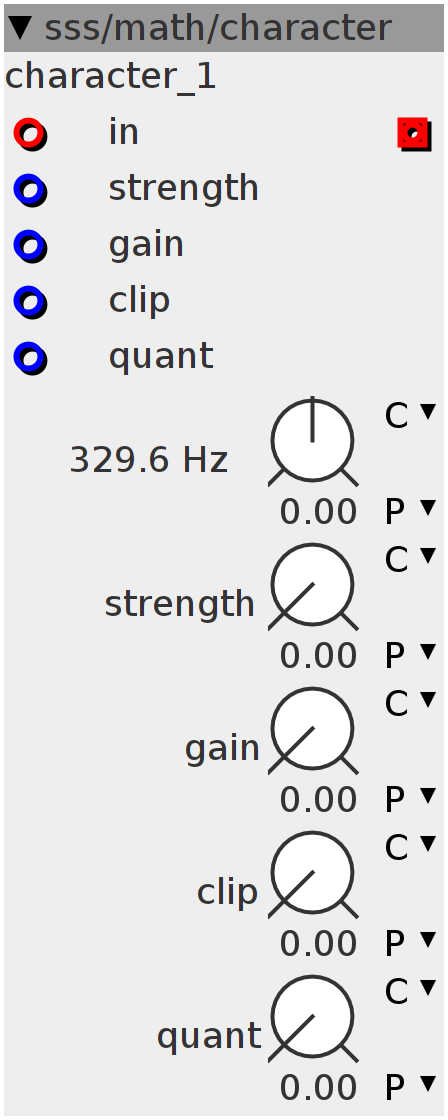character
Clipping distortion based on a lowpass filter. Will lower the filter cutoff to 0hz when reaching maximum levels. pitch: controls maximum filter cutoff (no ducking) Strength: controls the strength/rate of the ducking->lowering the maximum output level. Gain: adds gain to the input signal AND signal controlling the clipping Clip: adds gain only to the signal controlling the clipping Quant: quantizes the signal controlling the clipping. The strength, clip and quant controls could be seen as "character" controls, changing the respective amplitudes of the created overtones, creating different distortions. The gain control nicely warps this distortion-character up the frequency spectrum.
Inlets
frac32buffer input
frac32 strength
frac32 gain
frac32 clip
frac32 quant
Outlets
frac32buffer output
Parameters
frac32.s.map.pitch freq
frac32.u.map strength
frac32.u.map gain
frac32.u.map clip
frac32.u.map quant
int32_t val;val = 0;int32_t f;
int32_t quant = __USAT(param_quant + inlet_quant, 27);
quant = ___SMMUL(quant << 3, quant << 2) + 1;
int32_t gain = __USAT(param_gain + inlet_gain, 28);
int32_t strength = __USAT(param_strength + inlet_strength, 27);
strength = ___SMMUL(strength << 3, (62 << 23));
int32_t clip = __USAT(param_clip + inlet_clip, 27);int32_t av = val + inlet_in + ___SMMUL(gain << 3, inlet_in << 3) >> 1;
av = av / quant * quant;
av = __SSAT(av + ___SMMUL(av << 4, clip << 3), 28);
av = (av > 0 ? av : -av);
av = ___SMMUL(av << 3, av << 2);
av = ___SMMUL(av << 3, av << 2);
av = (1 << 27) - ___SMMUL(___SMMUL(av << 3, av << 2) << 3, strength << 2);
MTOF(param_freq, f);
f = ___SMMUL(av << 3, f) << 2;
val = ___SMMLA((inlet_in - val) << 1, f, val);
outlet_out = val;